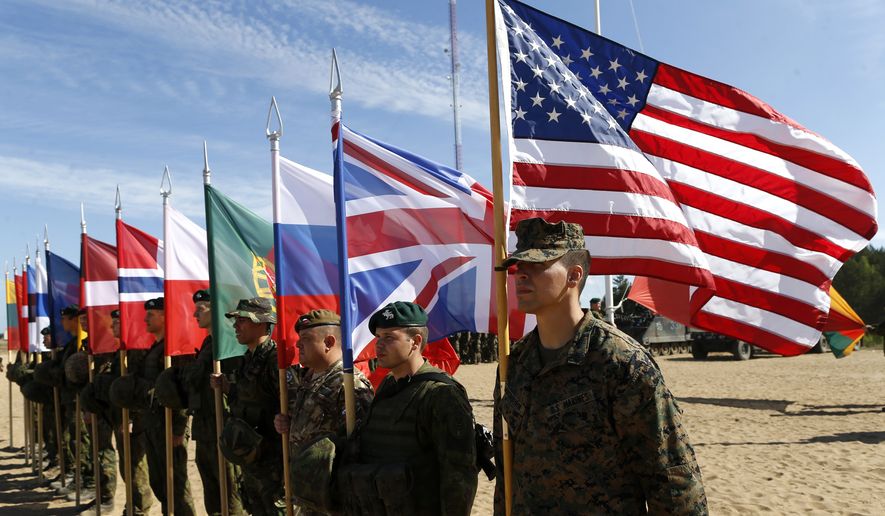ANALYSIS/OPINION:
After decades of big government supranationalism, massive public overspending and dangerously porous immigration policies, the European Union is in a state of decline, uncertainty and — increasingly — fear.
Yet the organization’s executive branch and its largest continental members — Germany, France and Italy — cling to delusions of grandeur. They have drawn up plans for a European Union army and deeper EU defense integration, claiming that this will enhance European security.
An EU army, however, is not the solution to Europe’s problems. It will undercut NATO, reduce U.S. influence in Europe, and strengthen the strategic position of Vladimir Putin’s Russia.
Last month, Jean-Claude Juncker, the Eurofederalist president of the European Commission, called for a “move towards common military assets,” with a pooling of military resources and “a European defense fund.” Germany’s powerful finance minister, Wolfgang Schauble, has urged the creation of “a common defense budget,” and Berlin and Paris have proposed a permanent joint military-civilian headquarters. And just last week, the European Parliament in Brussels voted on a military research budget which, if enacted, will be the next step toward creation of an EU army.
The United Kingdom, however, is not on board. Defense Secretary Michael Fallon has vowed that “we are going to continue to oppose any idea of an EU army or EU army headquarters, which would simply undermine NATO.”
The British are backed by the Baltic States, who rightly fear that an EU army will weaken NATO’s ability to stand up to the Russian threat on their doorstep. In fact there can be little doubt that an EU defense identity would work in Moscow’s interest, by diluting the power of NATO and siphoning away scarce resources from the alliance.
Britain will continue to fight any move to build an EU army until it leaves the European Union altogether by March 2019. And its opposition will likely continue once Brexit has been completed. But the U.S. must join London in warning against the drive toward a common EU military. As we have argued earlier, “the EU is not the answer to Europe’s military woes. Instead the U.S. should be pushing for more NATO-centric solutions which will ensure that all advancements in European defense capabilities are done through the NATO alliance or at least on a multilateral basis.”
The U.S. should be under no illusions when the EU talks about having its own military capacity. This is a largely political project (just as the European single currency is) aimed not at strengthening NATO but at creating a rival to it. A supranational EU army with an EU military headquarters would give extraordinary power to unelected European bureaucrats whose worldview is often fundamentally opposed to that of the U.S. or the U.K.
Washington should make clear to our European partners that NATO must retain its primacy over, and right of first refusal for, all Europe-related defense matters. It is NATO, not the EU (formerly the European Economic Community), that has ensured peace in Europe throughout the post-World War II era. U.S. policymakers should be vocal in expressing firm and robust opposition to the creation of an EU army, and work with key NATO EU members in Central and Eastern Europe to advance a pro-NATO agenda.
NATO remains as vital today to the security of America and the free world as it was when it was founded in 1949. Our European allies have to do more to contribute to NATO’s budget and ensure it remains a potent force on the world stage. Using scarce resources to build a paper tiger defense force under EU control is not the answer, and will only weaken the transatlantic alliance and NATO capability.
• Nile Gardiner is the director of The Heritage Foundation’s Margaret Thatcher Center for Freedom. Luke Coffey is director of the think tank’s Douglas and Sarah Allison Center for Foreign Policy.




Please read our comment policy before commenting.